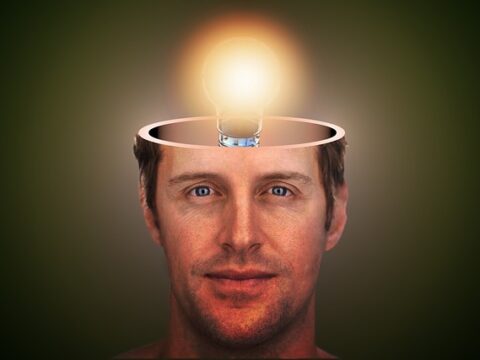Ralph Waldo Emerson, a great American writer, once said that the only way to find peace is from within yourself, which is much easier said than done for someone who experiences extreme anxiety. When someone is going through overwhelming panic, nervousness, worry, and uncertainty, it seems just as appealing to them to go inward and find peace as it does to jump into a pit of snakes.
Around 18 percent of all Americans aged 18 and over suffer from anxiety, making it the most common mental illness in the country. This number is gradually increasing; even some who have not been diagnosed with an anxiety disorder or panic disorder are prone to experience stress, tension, and anxiety in their day-to-day life. Today, many are even anxious about how to deal with their anxiety!
Podcast
A little bit of anxiety is okay?
Stress, fear, and anxiety are all emotions that we have all experienced at one point or another in our lives. Whether it’s something as small as a first date or something as big as an important exam, we have all felt these emotions. However, we shouldn’t let them control us. We should be able to live our lives to the fullest and not let these emotions hold us back.
Small amounts of fear can actually be beneficial, like salt is to food. It can help us stay disciplined, focused, and dynamic.
So remember to be gentle on yourself–anxiety is a natural emotion just as happiness is.
If you want to stay calm and relaxed during stressful events, you should practice yoga. Yoga includes different exercises for your body and breathing, along with meditation and ancient philosophies. This combination has helped many people with anxiety disorders and given them the strength to face life with a positive attitude.
There are yoga techniques that can help to calm an agitated mind.
1. Yoga poses for anxiety
This yoga sequence can help improve your mental and physical wellbeing. Asanas can help relieve tension and stress from the body by regulating hormones and increasing endorphins, which can result in a feeling of euphoria.
This pose can help you find your center by sitting down and focusing on your breath. You may find it easier to be still in this pose if you focus on your breathing.
Muscles worked:
- erector spinae
- quadriceps
- knee muscles
- ankle muscles
The hero pose is a popular exercise in yoga. This cross-legged meditation asana has been described as far back as medieval hatha yoga texts. In the West, it is referred to as Virasana. The medieval hatha yoga texts describe the pose as “the kneeling asana.” This pose has become a popular exercise in the western world because of its many benefits. It has been the subject of countless hyphenated names, and its history goes back to a practice described in medieval hatha yoga texts.
Tree pose may help you to focus inward and quiet racing thoughts.
Muscles worked:
- abdominals
- psoas
- quadriceps
- tibialis anterior
If you’re looking for some tips to learn tree pose yoga, you’ve come to the right place. This article will introduce you to the benefits of this ancient practice. Whether you’re a beginner or a yoga master, you can benefit from this asana. Follow these tips to improve your practice. You will be amazed at the benefits this posture has to offer. Just think about how amazing it feels! And if you’re not sure what it looks like, check out some videos!
The first thing you’ll want to do is get comfortable with the pose. First, make sure your toes are pointed and erect. Next, engage your thigh muscles by lengthening the back of your knee and pressing the mound of your big toe down. Finally, feel the energy of your standing leg rise up. This pose is an excellent way to improve your balance. After practicing it for a few times, you’ll feel the benefits.
This energizing pose helps neck and back tension.
Muscles worked:
- latissimus dorsi
- internal oblique
- gluteus maximus and medius
- hamstrings
- quadriceps
You may be wondering how to do triangle pose yoga. The good news is that there are many different variations available. Read on to discover the benefits of this yoga pose and how to do it safely. Then, try incorporating it into your practice! The following are some of the variations:
The first variation is called the traditional triangle pose. This version widens the stance and opens the pelvis. Your hands are placed differently; you may reach your foot with one hand or lie flat on the floor. Your body will remain balanced as you perform this yoga pose. Then, add the other hand in front of it to complete the triangle. The end result is a pose that is as effective for balancing your pelvis as it is for the arms.
The third variation of the pose requires you to extend the crown of your head away from your tailbone. Hold the position for five breaths. When the head is far enough away from the tailbone, the pose is called Trikonasana. You may also add other triangles to the combination. As you become more flexible, you may incorporate other triangles as you practice the pose. Regardless of where you practice yoga, you’re sure to benefit from the benefits of this yoga pose.
This pose may help you relax your mind while released tension in your body.
Muscles worked:
- spinal muscles
- piriformis
- hamstrings
- gastrocnemius
- gracilis
Standing Forward Bend Yoga is one of the many poses in modern yoga. This asana requires a person to bend forward while grasping their toes. There are variations of this posture, such as Padahastasana, which requires the toes to be held tightly. It is an excellent form of cardiovascular exercise that improves balance. Read on for a demonstration of this pose. Alternatively, watch the video below.
This backbend will help you to stretch out your chest and back, and relieve any tension or tightness that you may be feeling.
Muscles worked:
- intercostals
- hip flexors
- trapezius
- abdominals
If you are looking for a fun yoga pose to practice with your kids, you may have come across the fish yoga pose. The fish pose is a popular yoga pose for children, but what is it exactly? Here’s an explanation of the fish yoga pose, so you can make the best out of this challenging pose. To begin, make sure to stand up straight. When you have reached a comfortable position, lower your legs slightly. Then, lean your head back so that you can breathe normally.
The fish yoga pose is a great way to strengthen your abdominal area. Start by lying flat on the floor with your elbows alongside your torso. Once you have achieved a comfortable position, raise your head off the floor, press your thighs toward the floor and lower your chest towards the floor. After about six breaths, you can begin to raise your head to a higher position. Repeat this process three times a day for a few weeks.
To begin, lower your body to the floor and breathe deeply. Your neck should be free from any pressure, and you should feel a stretch throughout your chest and neck. Hold for a few minutes before releasing. After this, lift your head, protecting your neck. Then, slowly lower your body, followed by a second round. Once you’ve finished with the first round of fish yoga pose, you can move on to round two.
This pose helps you relax both your mind and body.
Muscles worked:
- hamstrings
- pelvic muscles
- lower back
- front torso
- back of the neck
The Legs-Up-the-Wall Yoga pose has many benefits. This stretch helps you release tension in your legs and feet, while promoting venous drainage. It also improves lymphatic fluid movement and encourages the return of blood to the heart. While some people experience some degree of stress after performing this exercise, it isn’t likely to lead to medical conditions. Regardless of the benefits it provides, you should be sure to do this exercise regularly.
This pose can help you relax and feel calm. If you want a heart opener, place a block or cushion under your back.
Muscles worked:
- adductors
- groin muscles
- pelvic muscles
- psoas
This pose may help soothe your nervous system.
Muscles worked:
- groin
- hamstrings
- spinal extensors
- gastrocnemius
2. Apply yogic philosophy to life
If we want to live happy and healthy lives, then knowing and applying some of the ancient yoga principles, like the Yamas and Niyamas, can be helpful. For example, the Santosha principle is all about contentment and valuing what we have. The Aparigraha principle reminds us that greediness and the desire to constantly acquire more possessions can lead to stress and anxiety, and that we should be content with what we have. The Soucha principle is all about keeping a clean mind and body, and can be particularly helpful for those who tend to worry excessively about catching infectious diseases.
Yoga philosophy, as represented by the Yamas and Niyamas, advocates for eating healthy and living a healthy lifestyle to ease anxiety and stress. Sri Sri Ravi Shankar’s commentary on the Patanjali Yoga Sutras is a good resource to understand this philosophy.
3. Pray, trust, and smile!
Prayer is a great way to feel more secure and supported, and to reduce anxiety. Building a regular practice of prayer and chanting can create more positive energy and help quiet the mind. Prayer is hard to research because it doesn’t come in a pill form, but faith is one of the important things for living a low-stress life. When you have faith, you don’t need to worry about the future because there is a higher power that is looking out for you and helping you. Also, even if you don’t feel like it, purposely smiling can help you feel more confident, relaxed, and positive.
4. Help others
When we only focus on ourselves, we tend to feel more stressed and anxious. Instead of worrying about ourselves all the time, we should think about how we can help the people around us. Doing things to help others can make us feel good and happy, and research has shown that it can also help reduce depression.
5. Remember impermanence
When we realize that everything around us is temporary, we become more relaxed and settled. We feel that things will not last forever, which frees us from anxiety.
6. Recall similar experiences
Anxiety-inducing events from your past can bring relief and remind you of your strength and ability to overcome them.
7. Keep positive company around
You are more likely to stick to your goals if you are surround by people with positive attitudes. The people you spend time with have an influence on your own outlook on life, so it is beneficial to spend time with people who are optimistic and happy.
Here are some other ways you can manage your anxiety:
- Sing, dance, and celebrate. The very intention to celebrate will pull you away from anxiety to a more harmonious state.
- Have faith and surrender to the Almighty and know that there is a supreme power who loves you and accepts you totally. This will bring a total sense of security.
- Remind yourself of the big picture and that you are committed to a greater goal.
- Be unpredictable for a while. Anxiety is always related to some anticipated action. Do something completely irrelevant and unpredictable.
- Readiness to face the worst will leave you with stability in the mind.
- Get rooted in the reality that you are not just this body, or mind, or emotions. The more we can be rooted in this reality that the life force within us is a witness to the actions, the thoughts, and emotions, the less we get affected by them.
Although yoga is often thought of as a one-time activity, it is actually a lifestyle. While a doctor can help you understand what kind of anxiety disorder you may have, a yoga teacher will guide you to live your life with a broader perspective. It is recommended that you learn yoga from certified yoga teachers.
While yoga has many benefits for your health, it is not a replacement for medicine. Always practice yoga under the supervision of a yoga teacher, and if you have any medical conditions, be sure to consult with a doctor and trained yoga teacher before trying any yoga poses.




